Marketing sustainable fashion
Marketing sustainable fashion
Created by Redress

Image credit: Redress
Hong Kong Best Prize winner Patrick Lam interviewed by local media on his sustainable collection at the Redress Design Award 2022 Grand Final Fashion Presentation.
WHat iS it?
Marketing is the process of promoting and selling products or services to customers.
WHy dO it?
Sharing your clothing’s sustainability credentials with your customers allows them to value the considered nature of your brand with transparency and honesty from the onset. This will help them connect more deeply with your brand and encourage them to dress sustainably. The ultimate goal of marketing is to drive sales, while also building brand awareness and loyalty.
How dO I do it?
1 Make your designs marketable

Good design is your most important marketing tool. If your product is sustainable but the design is not great, then no one will buy it, and that is not sustainable! Good design always needs to come first, while sustainability is the secondary message.
Expert Tip
Filippo Ricci
Co-founder of From Somewhere & Co-curator of Estethica
The fundamental rule when you sell a fashion collection is that the design and style is there, and that your product has something unique. With this achieved, you will have a narrative for your collection. If you also have a sustainability narrative for your collection, then definitely include it into your marketing. But sustainability should not be the main focus. Remember that if the collection is not designed well, then it is not going to sell.

Image credit: Stella McCartney
British designer Stella McCartney is renowned for her high fashion looks. She pursues design first, and her sustainability credentials — all her designs are vegan and some are made from sustainable materials — come second.

Image credit: Veja
French brand Veja demonstrates strong environmental and social commitments. However, Veja’s customers primarily pick their products because of good design, and become loyal brand advocates after learning about their sustainability commitments.
2 Know your market
Always know who you are designing for. Know your target audience, their likes and dislikes, their passions and their values. This will prompt you to discover how to dress them and provide a starting point for your brand communications.
Expert Tip
Tamsin Lejeune
Managing Director & Founder of Ethical Fashion Forum
Research the market to find opportunities for sales locations. Many entrepreneurs and businesses collapse because they spend all their time looking at fabrics and products without targeting them for the market.

Image credit: Finisterre
British brand Finisterre has a clear vision of who their customers are: people who love the sea and are ready to make a difference. They demonstrate their commitment to sustainability by using fabric made from recycled ocean plastic and those that do not pollute the ocean.
3 It’s all about the story
Connect your customers with your brand story, telling them how the product is made and where it comes from. Take them along with you on your sustainability journey and help them to understand how investing in your brand will play a part in positive change.
Expert Tip
Becky Willan
Co-founder & Director of Given London
It is really useful to think about your brand as a story, and then the role of marketing becomes how you tell that story when you’re not there to tell it to somebody face-to-face. The first thing to think about when writing your brand’s story is: ‘Who’s going to read it and who’s going to be buying my products?’ With these questions answered, you can then think about how you get some clarity into the story that you’re trying to tell. I think what’s interesting about sustainability is that it can be a really important part of your brand story, but it’s never going to be, and never should be, your whole message.
Expert Tip
Lucy Siegle
Journalist & Broadcaster
The important thing for me is the narrative behind clothes and behind their design. It’s all about a story. Consumers increasingly like to know where something is from and why it has been made. We live on a planet that is overcrowded by consumer goods, from fashion to colours of paint. You have to make a case for what you’re producing these days. Why is it being made? As a designer, you can’t just design for landfill; you have to design for somebody and for some reason. As a consumer, I want to know what’s the reason for your design and why you’re bringing this product to the market.

Image credit: Rags2Riches
Filipino brand Rags2Riches has a strong brand story behind their upcycled products. They source their textiles from Northern Luzon artisan communities and collaborate with indigenous groups from Mindoro and the women of the T’boli. This gives consumers a real connection to what they are buying.
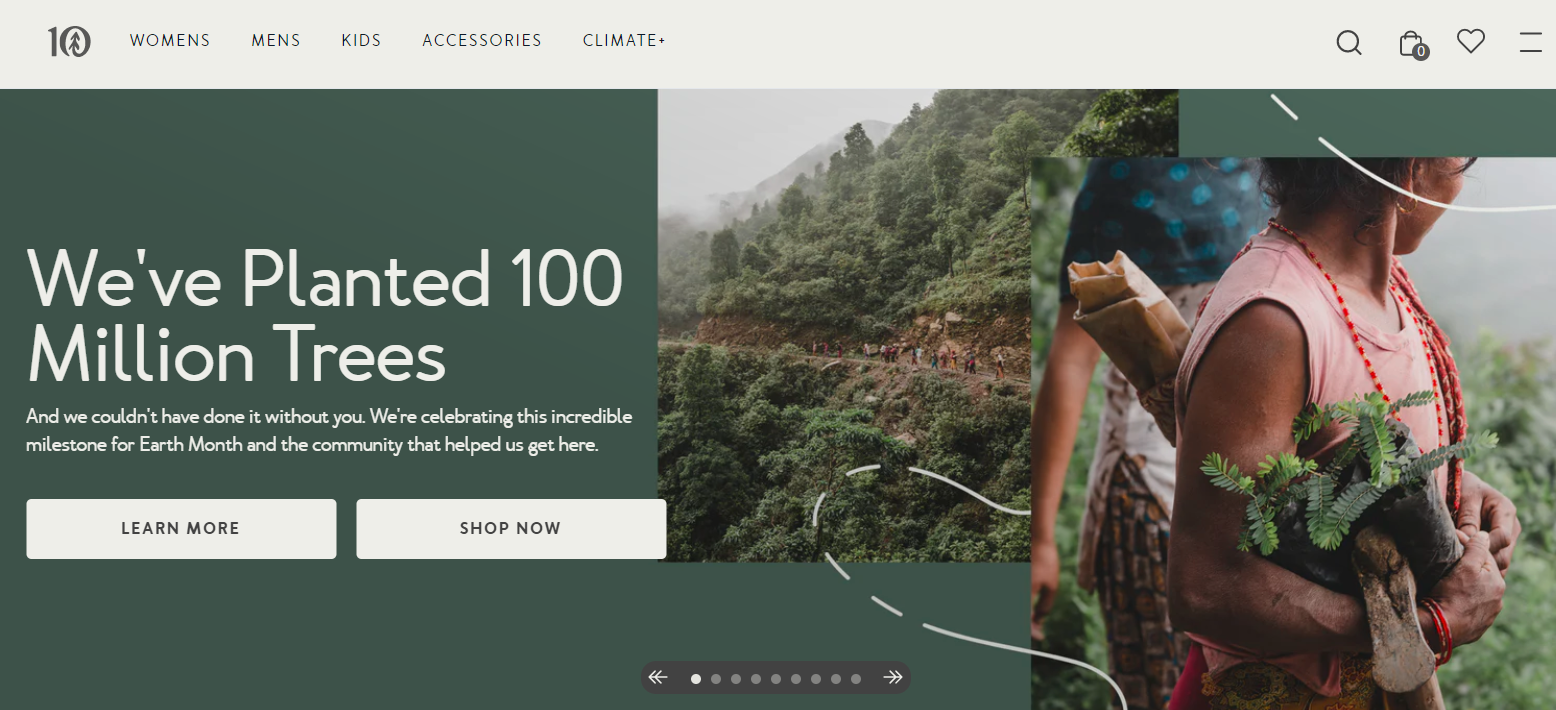
Image credit: Tentree
Putting the planet and people first recognises the importance of not just economic sustainability, but also social and environmental sustainability. Tentree uses regenerative material made from wood pulp, and in return, plants ten trees for every item purchased in order to reduce carbon emissions and provide tree-planting jobs in communities. More than 100M trees have already been planted through Tentree. Supporting regenerative solutions is key to a circular economy and it is important to ensure you are not just carbon off-setting in order to distract from the fact that you are continuing to produce products.
4 Make it simple
Make your message simple, focusing on one key message to grab your customer’s attention. Find out what is unique about your designs and highlight this in your marketing. Once you have your customer’s attention, you can tell them more later.
Expert Tip
Lucy Siegle
Journalist & Broadcaster
One of the key problems with communicating sustainable messaging is trying to put everything on one huge clothing label, as long as a cow’s tongue! That is not going to work. People are not going to read it and your message is not going to get across to your customers. So you need to find shortcuts, and these shorter messages must really pack a punch so that your customer really knows what you’re doing. You only get one chance to impress a consumer now — so you really have to go for it!

Image credit: Redress
Keywords on Boyish Jeans’ hang tag speaks directly to their customers about their approach to a pair of more sustainable jeans.
5 Be direct
Use direct, clear, and consistent language. Avoid vague or irrelevant terms such as ‘green’ and ‘eco’. Don’t overwhelm the consumer with too much information, nor make claims unless you can back them up.

Image credit: Girlfriend Collective
Girlfriend Collective makes it easy for customers to understand how their #1 best-selling legging minimises environmental impact.
6 Get online
Going online is a great way to share more information about your brand’s story, especially as your customers might not be located in a single market. Use social networks and a website to communicate your brand’s philosophy with your customers in ways that can’t be done in-store or on the garment. Bring your customers behind the scenes of your brand, giving them access, authenticity, and engagement.
Expert Tip
Filippo Ricci
Co-founder of From Somewhere & Co-curator of Estethica
An online presence is becoming the main platform for fashion in general, and is a fantastic tool for marketing because it gives a lot of freedom. I believe sustainability will gain a lot of strength if online tools are used properly. When you plan your marketing activities, start to use online tools, such as your own website and any other social network tools. Make sure you have strong and well-planned marketing around your sustainability initiatives so that the message is loud and clear.
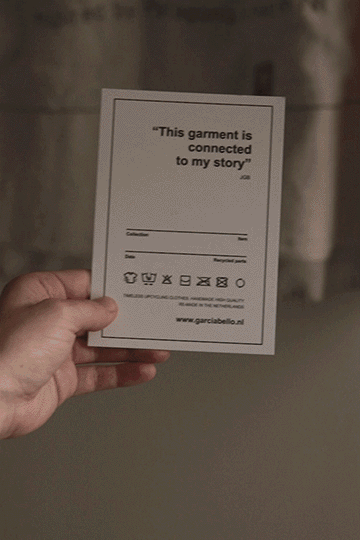
Juliana Garcia Bello, the winner of the Redress Design Award 2020 womenswear category, uses Augmented Reality (AR) technology to communicate with her customers. Her Brand GARCIA BELLO uses the 3Dink app, to visualise the garment on a 3D digital avatar, provide important brand storytelling, and instruct on garment care.

Image credit: Eric Wong / Absurd Laboratory
Hong Kong designer and Redress Design Award 2011 (then known as the EcoChic Design Award) Finalist Eric Wong set up an Instagram page to promote his brand, Absurd Laboratory, and to share about how his sustainable collections are made.
7 Engage with your customers
Spark a conversation that lets customers be a part of the journey and solution. Create a channel within your communication platforms that allows your customers to share their sustainability ideas and how they use, wear, and recycle your products.

Image credit: HMAD
Hong Kong denim upcycling and reconstruction brand HMAD shares customer photos on their Instagram story when they are tagged.

Image credit: Levi’s
US brand Levi’s challenged their customers to find the most innovative and sustainable air-drying solutions for clothing in their ‘Care to Air’ design challenge.
Plus, see how Crystal Denim, a large-scale manufacturing company in Hong Kong, collaborates with brands to design for a low-carbon supply chain here.
8 Use industry tools
You can verify a product’s environmental and/or social commitments with credentials such as GOTS, Oeko-Tex, Better Cotton Initiative, Bluesign, B Corp, and Fair Trade certifications, standards, and labels. Getting a third party to verify your sustainability claims gives you more credibility.

Image credit: Avocado
Products from sustainable houseware and loungewear brand Avocado are accredited with various environmental certifications and standards.
9 Be creative
Show your designs in their best light. Put them under the spotlight and create strong imagery and storytelling through a fashion shoot or installation, video, or fashion show, which will help you to stand out.
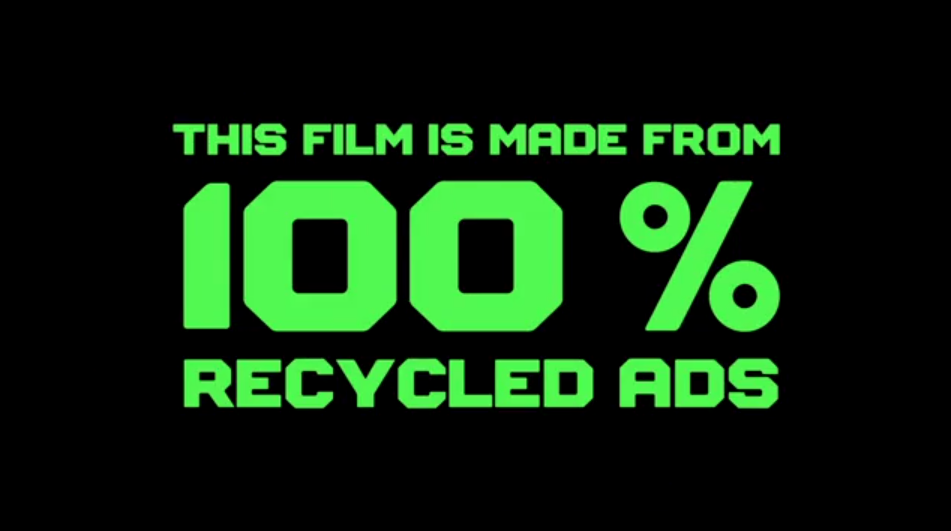
Image credit: Nike
US brand Nike made an inspiring commercial using 100% recycled advertisements to promote their series of products, including jerseys made from recycled plastic bottles, and community-based initiatives, including supporting the annual Homeless World Cup. The recycled commercial reflects Nike’s core belief in sports as a vehicle for a sustainable world and peace.

Image credit: Adolfo Dominguez
Aldofo Dominguez invites customers to return their 20–40 years-old clothes, then refurbishes and features them in their ‘Old Clothes’ campaign to encourage people to ‘Buy clothes that last longer than trends’.

Image credit: Patagonia
US brand Patagonia’s controversial ‘Don’t buy this jacket’ advertisement was printed in The New York Times on Black Friday, the biggest sales day in the US. The ad highlighted Patagonia’s environmental commitment to making products that are useful, long-lasting, multifunctional where possible, and beautiful, not at the whim of fast and over-consumed fashion.
10 Be sustainable
In order to drive circular fashion practices, consider your materials and whether they are really necessary. Where will they end up? Remember, everything makes an impact! Use as little packaging as possible. Can you skip unnecessary embellishments and labelling? Go digital, use less paper, and make an impression on your customer about what you stand for. Practise what you preach — and tell people about it!

Image credit: Delta Global
Delta Global worked with MATCHESFASHION to develop a packaging box which can be flattened, recycled, or reused by their customers using the Delta Global Removable Magnet System®.

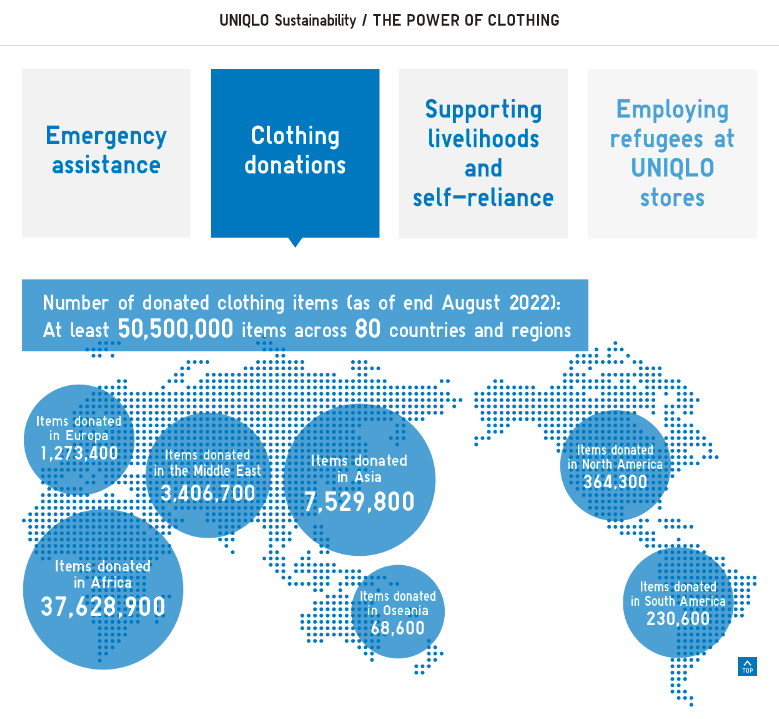
Image credit: UNIQLO
Japanese retailer UNIQLO launched their RE.UNIQLO programme encourage customers to recycle used garments and transform them into new products. Through their partners, including the United Nations Refugee Agency (UNHCR), NGOs, and nonprofits, they deliver wearable used clothing to refugees, disaster victims, and others in need worldwide.
11 Get innovative
Being a designer is about creative problem-solving, and this can come in many forms. To be a sustainable game-changer contributing to a circular fashion industry, you need to be innovative in the ways you interact with your customers. Inventing or engaging with new materials, manufacturing techniques, technology, and ways of engagement can make your product dynamic and unique. Remember, innovation drives competition and responds to market demands and social trends.
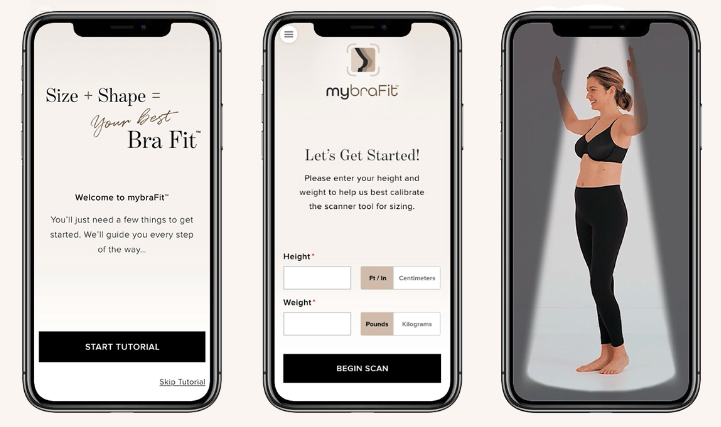
Image credit: Wacoal
Wacoal’s mybraFit™ AI-powered app helps customers accurately find their bra size – a step which normally relies on the knowledge and experience of a specialist. It also offers personalised bra recommendations to fit their needs.

Image Credit: Renoon
Artknit Studios uses Renoon, an independent platform for detecting the composition, certifications, and customer reviews of each product. This allows them to verify their products’ impact and supply chain journey to build customers’ trust in the brand’s sustainability commitment.

Image credit: Allbirds
Allbirds created the world’s first net-zero carbon shoe with their invention of the carbon-negative SweetFoam®, a sugarcane-based foam midsole, alongside regenerative wool and bioplastic eyelets.
12 Be transparent
Last but by no means least, be transparent about your progress! You do not want to risk misleading your consumers through greenwashing or greenhushing. No one is perfect and no brand is 100% sustainable, certainly not from the beginning, so be open about your progress and bring your customers along on your journey of becoming a sustainable brand.

Image credit: Honest By
Belgian company Honest By breaks down information about their supply chain and the pricing of their products. They are the world’s first company to do so, with their name reflecting their 100% transparency ethos.



